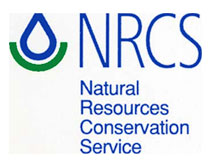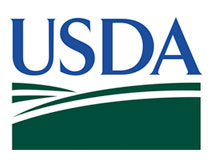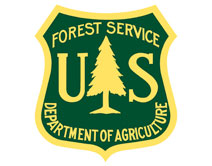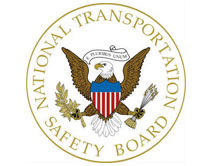NRCS National Water and Climate Center (Portland, Oregon)
 BESTech provides all applications development, programming, and web development services for the USDA/NRCS National Water and Climate Center (NWCC) in Portland, Oregon. These services include requirements analysis, programming, implementation, client training, and documentation of all NWCC mission critical systems. Software developed for NWCC has an active life after implementation, with frequent updates, modifications, and enhancements. BESTech also provides maintenance support for all mission critical systems at NWCC.
BESTech provides all applications development, programming, and web development services for the USDA/NRCS National Water and Climate Center (NWCC) in Portland, Oregon. These services include requirements analysis, programming, implementation, client training, and documentation of all NWCC mission critical systems. Software developed for NWCC has an active life after implementation, with frequent updates, modifications, and enhancements. BESTech also provides maintenance support for all mission critical systems at NWCC.
The software we develop for NWCC includes climate data collection and storage, water supply forecasting, data reporting, and data evaluation and transformation. Where appropriate, BESTech achieves efficiencies through the use of proven open source code. We have written several general purpose administration tools, as well as environmental software. BESTech engineers and programmers utilize many different tools and technologies. The languages we employ at NWCC include C, C++, Java, Fortran, MS Visual Basic, MS .NET languages, as well as shell scripts, Awk, Perl, HTML, python, and others. We use primarily open-source tools including Linux, GNU compilers, Cygwin, the Eclipse IDE, the Ant build tool, Apache web server, Tomcat servlet/JSP container, and the JBoss application server.
 BESTech has a history of successful hands-on experience developing client/server and web-based geospatial applications to support NWCC mission requirements. Moreover, we have developed several web-based interfaces that allow users to access climate data programmatically. These services enable users to create their own products using climate data collected, analyzed, and published by NWCC. Our understanding of this segment of the NRCS mission positions us to ensure a smooth transition of legacy client and server applications to the future NRCS Web environment, as well as the efficient roll out of modern Web-based and mobile applications.
BESTech has a history of successful hands-on experience developing client/server and web-based geospatial applications to support NWCC mission requirements. Moreover, we have developed several web-based interfaces that allow users to access climate data programmatically. These services enable users to create their own products using climate data collected, analyzed, and published by NWCC. Our understanding of this segment of the NRCS mission positions us to ensure a smooth transition of legacy client and server applications to the future NRCS Web environment, as well as the efficient roll out of modern Web-based and mobile applications.
Forest Service Independent Data Center Assessment
(Albuquerque, NM)
 BESTech performed an enterprise-wide Forest Service (FS) data center assessment to assist the agency with migrating over 600 mission critical applications from 200 geographically dispersed locations to a centralized data center environment at the USDA National Information Technology Center (NITC) in Kansas City, MO. This effort included guidance to assist efficient and cost-effective FS Data Center Services (DCS) operations. In addition, the effort included an evaluation of data center hardware, operating system software, and network services, as well as a myriad of Forest Service GIS/Geospatial mission critical applications and related application support services. The purpose of the engagement was to determine whether the FS Data Center Migration strategy was meeting the business needs of the FS program missions. BESTech’s Enterprise Architects and Systems Engineers determined whether or not the FS’s previous strategy and approach was comparable to organizations of similar size and complexity and delivered a “Roadmap” that is currently guiding all Forest Services’ data migration efforts and is moving the agency into an Information Technology Managed Services (ITMS) environment.
BESTech performed an enterprise-wide Forest Service (FS) data center assessment to assist the agency with migrating over 600 mission critical applications from 200 geographically dispersed locations to a centralized data center environment at the USDA National Information Technology Center (NITC) in Kansas City, MO. This effort included guidance to assist efficient and cost-effective FS Data Center Services (DCS) operations. In addition, the effort included an evaluation of data center hardware, operating system software, and network services, as well as a myriad of Forest Service GIS/Geospatial mission critical applications and related application support services. The purpose of the engagement was to determine whether the FS Data Center Migration strategy was meeting the business needs of the FS program missions. BESTech’s Enterprise Architects and Systems Engineers determined whether or not the FS’s previous strategy and approach was comparable to organizations of similar size and complexity and delivered a “Roadmap” that is currently guiding all Forest Services’ data migration efforts and is moving the agency into an Information Technology Managed Services (ITMS) environment.
NRCS Performance Improvement Center (Research Triangle Park, NC)
 BESTech supports the NRCS business performance improvement initiative by applying a business model tool and re-engineering process to describe how NRCS can more efficiently and effectively deliver conservation planning, implement programs, and manage financial assistance in the future. We assist the NRCS executive leadership with initiating an Agency-wide Conservation Delivery Streamlining Initiative to streamline its business processes for delivering technical and financial assistance to: (1) simplify delivery of conservation assistance, making it easier for customers to participate in NRCS programs and easier for NRCS staff to deliver its products and services; (2) gain efficiencies from streamlined and integrated business, technical, and financial processes; (3) ensure that NRCS’s conservation assistance continues to be resource-centric, with technical staff that is able to spend adequate time in the field with clients to conduct science-based conservation planning.
BESTech supports the NRCS business performance improvement initiative by applying a business model tool and re-engineering process to describe how NRCS can more efficiently and effectively deliver conservation planning, implement programs, and manage financial assistance in the future. We assist the NRCS executive leadership with initiating an Agency-wide Conservation Delivery Streamlining Initiative to streamline its business processes for delivering technical and financial assistance to: (1) simplify delivery of conservation assistance, making it easier for customers to participate in NRCS programs and easier for NRCS staff to deliver its products and services; (2) gain efficiencies from streamlined and integrated business, technical, and financial processes; (3) ensure that NRCS’s conservation assistance continues to be resource-centric, with technical staff that is able to spend adequate time in the field with clients to conduct science-based conservation planning.
National Transportation Safety Board (Washington, DC)
 The National Transportation Safety Board (NTSB) secured BESTech services to transition their entire website — NTSB.gov, with associated applications to a Virtual Private Cloud (VPC) environment and to provide operations and management services. The new architecture platform is capable of securely managing their approximately 20,000 static pages and downloadable files and multiple database-driven applications against which the public generates approximately 5,000 hits per day. Database sizes range from 3MB to 2GB. Design and implementation approach includes scalability and incorporation of industry best practices.
The National Transportation Safety Board (NTSB) secured BESTech services to transition their entire website — NTSB.gov, with associated applications to a Virtual Private Cloud (VPC) environment and to provide operations and management services. The new architecture platform is capable of securely managing their approximately 20,000 static pages and downloadable files and multiple database-driven applications against which the public generates approximately 5,000 hits per day. Database sizes range from 3MB to 2GB. Design and implementation approach includes scalability and incorporation of industry best practices.
The Content Management System (CMS) utilizes SharePoint 2010 for managing internal and external applications. A medium server farm implementation was applied that includes third-party web parts and tools such as Microsoft Fast Search. Highlights of configuration requirements include; Central Admin server, SMTP services, site collections, developing web parts for accessing and displaying database elements, indexing configurations, metadata services and content deployment. CMS topology includes authoring, staging and production environments for content management as well as the creation and configuration of Content Deployment Jobs (CDJ) and approval workflows for authoring.
Infrastructure hosting services are included: antivirus software, patch management, and other host-based security and operations management reporting infrastructure. Security requirements include establishing an Information Security Continuous Monitoring (ISCM) program to provide ongoing security and continued use at an acceptable level of risk for FISMA Moderate compliance. Industry Best Practices were incorporated in the development of the architecture, navigational elements of the cloud environment; associated activities included actions such as enhancing the site map, cross-browser and Section 508 compliance testing.

